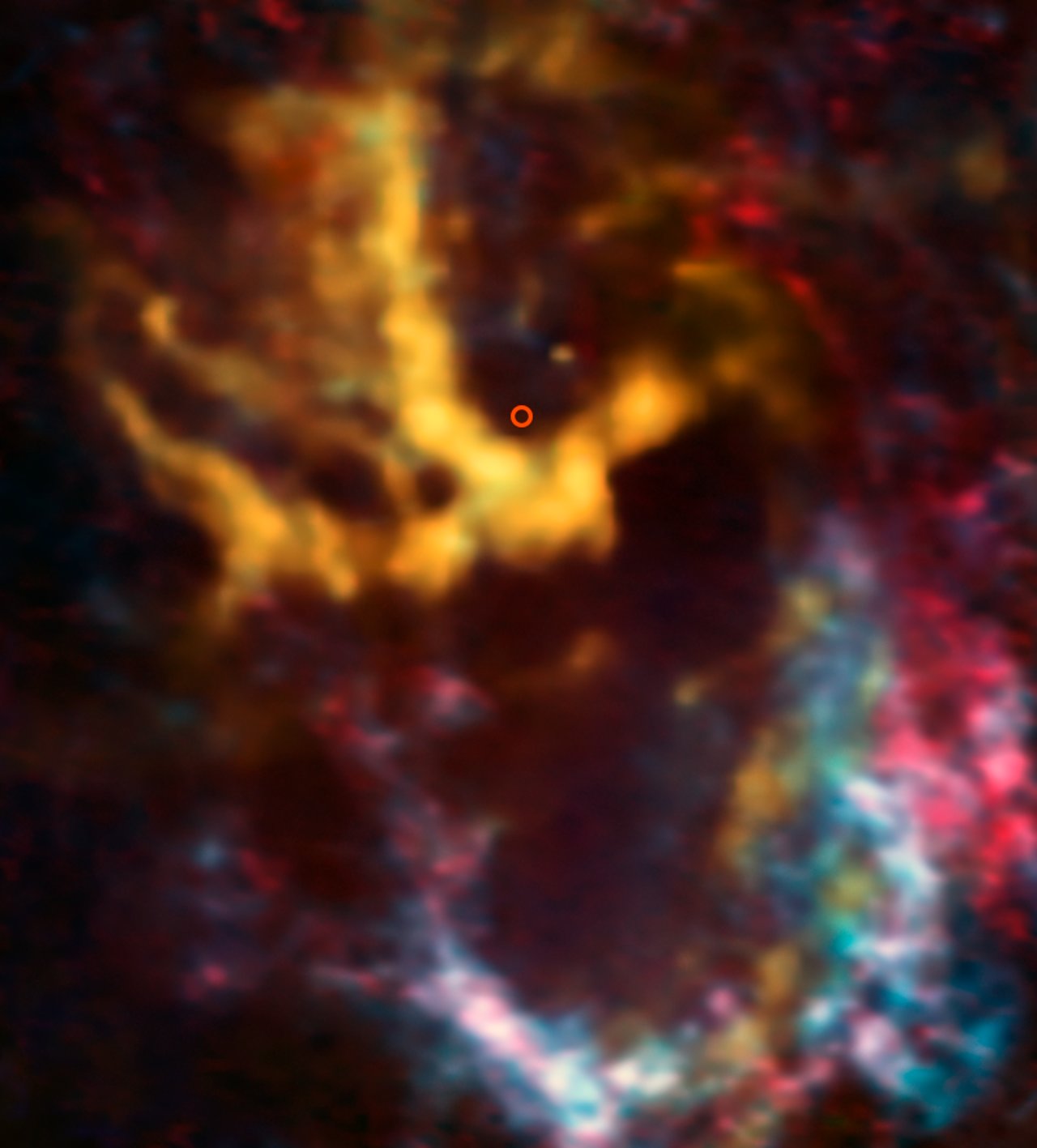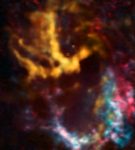Cloudlets Swarm Around our Local Supermassive Black Hole
This image from the Atacama Large Millimeter/submillimeter Array (ALMA) shows the area surrounding Sagittarius A*, the supermassive black hole that lurks at the center of the Milky Way — highlighted here with a small circle. New research has revealed exciting evidence of interstellar gas and dust orbiting the black hole at high speeds.
The molecular-hydrogen-rich gas clouds which have been identified are known as molecular cloudlets, and they have never before been unambiguously detected. This image actually shows the distribution of molecules including carbon monoxide, the cloudlets’ second most abundant molecular component. The cloudlets lie 26 000 light-years away from us, orbiting fast and relatively close to the black hole, at a distance of about one light year. ALMA’s high resolution allowed scientists to detect the cloudlets, which are the products of pre-existing massive clouds rotating around the center of our galaxy. These clouds were tidally disrupted into dense fragments and a lower density, short-lived component. The latter was identified thanks to the signs left by the passage of the synchrotron radiation emitted by Sagittarius A* through the diffuse gas between the cloudlets.
Although clouds of molecular gas have the potential to form new stars, these cloudlets are unlikely to create stellar newborns. They have a comparatively small mass of around 60 times that of the Sun, and exist close to the huge, turbulent, punishing gravitational forces exerted by Sagittarius A*.
While the stars orbiting Sagittarius A* have been systematically observed; these dense molecular cloudlets have not been detected so close to the center of our galaxy before.
Additional Information
The Atacama Large Millimeter/submillimeter Array (ALMA), an international astronomy facility, is a partnership of the European Southern Observatory (ESO), the U.S. National Science Foundation (NSF) and the National Institutes of Natural Sciences (NINS) of Japan in cooperation with the Republic of Chile. ALMA is funded by ESO on behalf of its Member States, by NSF in cooperation with the National Research Council of Canada (NRC) and the Ministry of Science and Technology (MOST) in Taiwan and by NINS in cooperation with the Academia Sinica (AS) in Taiwan and the Korea Astronomy and Space Science Institute (KASI).
ALMA construction and operations are led by ESO on behalf of its Member States; by the National Radio Astronomy Observatory (NRAO), managed by Associated Universities, Inc. (AUI), on behalf of North America; and by the National Astronomical Observatory of Japan (NAOJ) on behalf of East Asia. The Joint ALMA Observatory (JAO) provides the unified leadership and management of the construction, commissioning and operation of ALMA.

